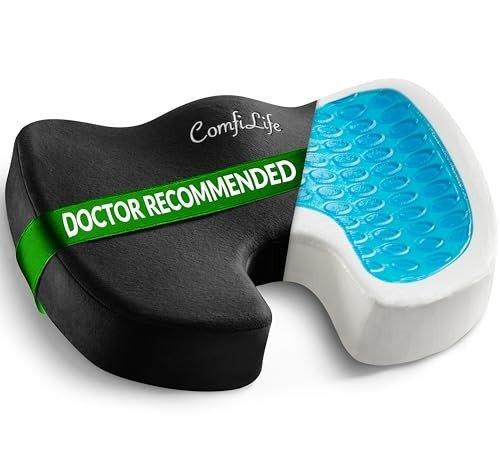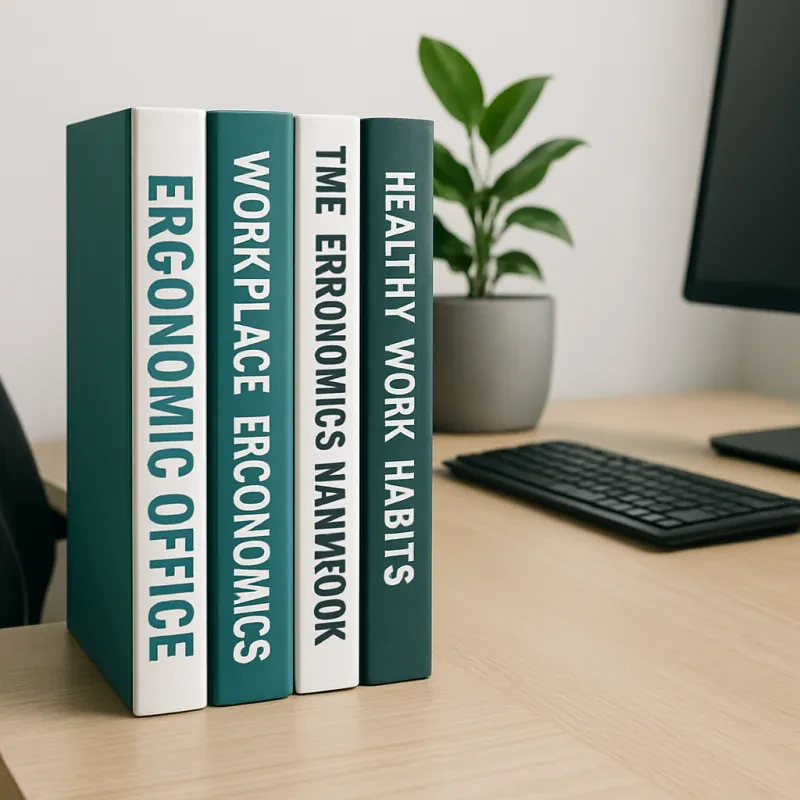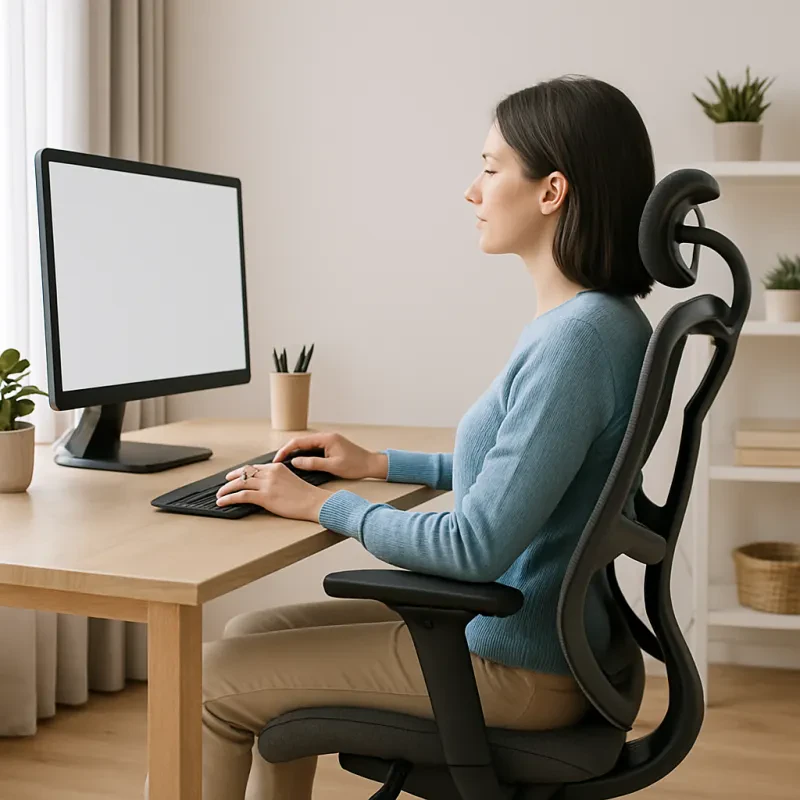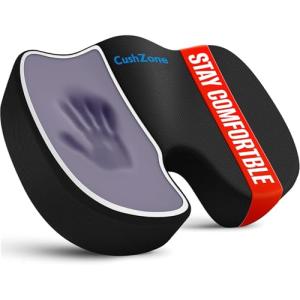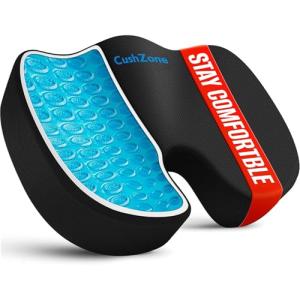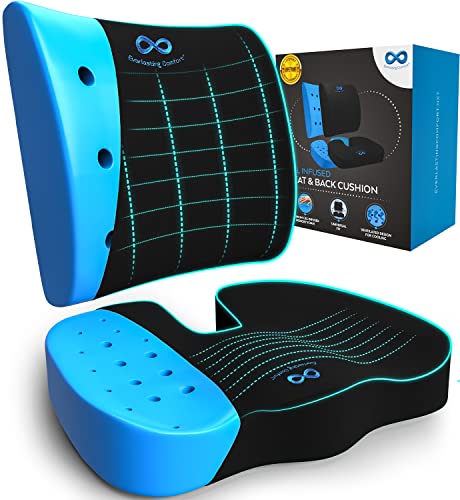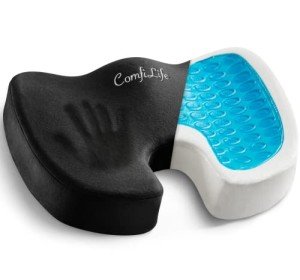Introduction
If you’ve ever experienced sciatica or chronic lower back pain, you know how sitting for long periods can make things worse. Whether you're working from home, driving, or even relaxing at a café, the way you sit—and what you sit on—can have a huge impact on your comfort and health.
That’s where seat cushions come in. Specifically designed to relieve pressure and improve posture, ergonomic seat cushions can be a game-changer for people dealing with sciatica and lower back pain. In this article, we’ll explore how they work, what types are available, and what to look for when choosing one.
Understanding Sciatica and Lower Back Pain
Before diving into seat cushions, let’s quickly break down what’s going on with sciatica and lower back pain.
-
Sciatica is a condition where the sciatic nerve (the longest nerve in the body) becomes irritated or compressed. This often causes sharp, shooting pain that radiates from the lower back down the leg. Numbness, tingling, or muscle weakness can also occur.
-
Lower back pain can stem from poor posture, prolonged sitting, herniated discs, muscle strain, or degenerative spine issues. It’s one of the most common health complaints among adults—especially office workers and drivers.
In both cases, sitting on a hard or unsupportive surface can aggravate the problem. A good seat cushion helps by reducing pressure, aligning your spine, and providing support where it's needed most.
How Seat Cushions Make a Difference
Let’s take a closer look at how seat cushions can relieve discomfort and promote healing.
1. Pressure Redistribution
When you sit on a hard surface, your body weight is not evenly distributed. This can compress the sciatic nerve and add pressure to the lower spine and tailbone. A well-designed seat cushion helps distribute your weight more evenly, reducing pressure on sensitive areas.
2. Spinal Alignment
Many seat cushions are ergonomically contoured to promote proper pelvic tilt and maintain the natural curve of your spine. This is crucial for people with lower back pain, as it prevents slouching and supports a healthy posture.
3. Coccyx (Tailbone) Relief
Cut-out cushions, especially coccyx cushions, are designed with a U-shaped hole at the back to suspend the tailbone. This design reduces direct contact with the seat, which can ease pain and inflammation in the lower spine and surrounding nerves.
4. Enhanced Comfort for Long Sitting Sessions
Whether you're working an eight-hour shift or taking a long road trip, sitting for extended periods can intensify lower back issues. Memory foam or gel cushions provide comfort and reduce fatigue by conforming to your body shape while maintaining support.
5. Improved Circulation
Sitting improperly can restrict blood flow to your legs and lower back. A good seat cushion supports better circulation by encouraging a more upright, relaxed posture that allows blood to flow more freely.
Types of Seat Cushions for Sciatica and Back Pain
Here are some of the most effective cushion types for those with sciatica or chronic lower back pain:
1. Coccyx Cut-Out Cushions
-
Best for: Tailbone pain, sciatica, herniated discs.
-
How it works: The U-shaped design removes pressure from the coccyx and encourages proper posture.
2. Wedge Cushions
-
Best for: Anterior pelvic tilt and posture correction.
-
How it works: Slightly sloped, these cushions tilt your pelvis forward to help maintain the natural lumbar curve.
3. Donut Cushions
-
Best for: Hemorrhoids, coccyx injuries, post-surgery support.
-
How it works: Circular with a hole in the center, these reduce direct pressure on sensitive areas.
4. Memory Foam Cushions
-
Best for: General back support and sciatica.
-
How it works: Contours to your body, absorbing pressure and offering firm support.
5. Gel-Infused Cushions
-
Best for: People who run hot or sweat easily.
-
How it works: Combines the benefits of memory foam with cooling gel layers to regulate temperature.
Key Features to Look for in a Seat Cushion
When choosing a seat cushion for sciatica or back pain, here are a few things to keep in mind:
-
Ergonomic design: Look for contoured shapes that support the hips and lower back.
-
High-density materials: Memory foam or gel-infused foam retains its shape and offers long-term support.
-
Portability: If you plan to use it at work, in the car, or while traveling, choose a lightweight option with a handle.
-
Breathable cover: Mesh or ventilated fabric can keep you cool and prevent sweat buildup.
-
Washable cover: A removable, machine-washable cover makes maintenance easy.
Real-World Use Cases
1. Remote Workers
Spending hours at a desk without ergonomic seating? A cushion can make your dining chair feel like a premium office chair. It also encourages better posture and keeps discomfort at bay during long video calls or deep-focus sessions.
2. Drivers and Commuters
Car seats often lack proper lumbar support. Adding a seat cushion can transform your driving experience, reducing pressure during long commutes or road trips.
3. Gamers and Streamers
Extended gaming sessions can put stress on your spine. Seat cushions can add comfort and prevent pain from setting in—ideal for marathon sessions.
4. Seniors
As we age, joint pain and back discomfort become more common. Seat cushions provide gentle support, whether for dining chairs, recliners, or wheelchairs.
Common Questions
Q: Can a seat cushion actually cure sciatica or back pain?
A: A cushion won’t cure the root cause, but it can significantly reduce pain and prevent the condition from worsening. It’s best used in combination with exercise, stretching, and medical care.
Q: How long should I sit on a cushion each day?
A: There’s no one-size-fits-all answer, but the key is to change positions regularly. Use your cushion as often as needed, and pair it with movement breaks.
Q: Are cheap cushions worth it?
A: While budget cushions may offer short-term relief, investing in a high-quality ergonomic cushion will offer better support and last longer.
Final Thoughts
Dealing with sciatica or lower back pain can feel frustrating, especially when you’re stuck sitting all day. But the solution doesn’t always require major lifestyle changes or expensive chairs.
A simple, well-chosen seat cushion can dramatically improve how you sit—and how you feel. Whether you're at home, in the car, or at the office, these cushions offer a portable, affordable way to support your body and protect your spine.
If you haven’t already tried one, now might be the time to give your seat (and your back) the upgrade it deserves.
